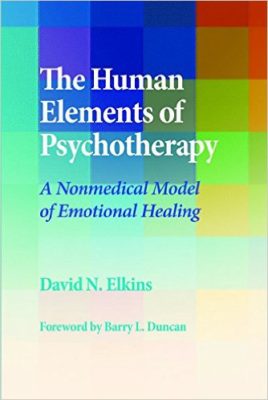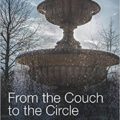Psychotherapy Bulletin
Psychotherapy Bulletin

The Art of Bohart
Person-Centered Therapy and the Enhancement of Human Potential, by Arthur C. Bohart - A Review
Clinical Impact Statement: In a collection of papers over a lifetime of work in the field, Dr. Bohart makes a persuasive and nuanced argument for the essence of psychotherapy effectiveness.
It is rare when a collection of a single author’s papers is neither disjointed or repetitious. So, it was a particular delight to read “The Art of Bohart.” It is also a particularly apropos title. Although he acknowledges a keen understanding of the science of therapeutic approaches, Bohart argues that it is the artistry that makes the process engaging and beautiful. Science can provide us with the tools, but only when they are used in personal, creative ways, do they make a true long-lasting impact.
I have personally heard Dr. Bohart deliver papers several times. I have even had an opportunity to present a point-counterpoint dialogue at a few conferences. Each of his lectures was well-crafted, full of useful material and poignant. He can be spellbinding in his balance of erudition, composition and “down-home” openness. So it is with the papers in this book. Each article/chapter is well constructed, reader-friendly and contains considerable depth of insight into what is rightfully called the “Art of therapy.”
Although every paper offers pearls of understanding about the process of psychotherapy and the core of what makes therapy work, two stood out significantly for me: Chapter 3, Further meditations on clients’ wisdom and Chapter 10, Listening as being: an alternative to hope. Both chapters take unique perspectives on what might initially seem to be well-known constructs and re-examines them through the prism of true deep listening, witnessing and being a companion on the path of self-regulation and growth.
It would be easy to conclude that he was playing word games here and essentially hashing over his personal viewpoint on a familiar theme, but as I got into the chapters and his arguments, I became aware of the depth of his understanding and power of the presentation. In exploring wisdom and hope (and I might add intimacy) in his unique manor, he provides a more nuanced understanding as well as a novel perspective on what works in therapy and why.
Over the course of the collection, in the process of describing the essence of therapy and the artistry involved, Bohart manages to make Rogerian, person-centered work both rebellious and radical (portrayals I suspect make him proud).
Repeatedly, through various lenses, he depicts the salience of the relationship, of witnessing and being with clients, allowing them to activate their personal healing and acceptance mechanisms, rather than being prescriptive and interventionist. He makes a powerful argument by referencing both the evidence-based literature and his personal experience. Indeed, it is a rare collection of professional work that is so confessional. This is particularly effective in that he engages in a parallel process, using personal vignettes while elucidating individual client’s subjective experience.
So, what is it that the Art of Bohart asks of the reader (and those so fortunate to have been in the audience for presentations of his papers)? He asks that therapists forego preset notions of what they presume is best for the client, and instead, enter carefully and empathically into the client’s world and in doing so, help clients activate their own healing and insight. It is clearly a greater challenge than a “tab-in-slot” approach. By engaging with clients in this manner, our natural egos and desire to problem-solve are seen as impediments, rather than benefits to the actual therapy.
He believes that the client who lives in the present has the capacity to make the best of their awareness and life, and he contrasts it to those who look for “the answer” in the past as a detective might, or to hope for a specific (potentially) unfulfillable future endeavor. Instead, it is the focus on the present and on being that allows for a richer fuller life.
He is not alone in making this assertion. Many phenomenologists have postulated it similarly (Buber, (1937/1970; Binswanger, 1963; Shapiro, 2016). Viktor Frankl (1959; 2006) argued persuasively that even in a concentration/death camp, inmates who found small pieces of beauty (a bird, a love they carried) were more likely to survive those horrors. Frankl poignantly avowed that we have no control over what happens in our lives, we only have the power to determine how we will perceive those events and the attitude we have.
It is no surprise that Rogers also had such a powerful interaction with Martin Buber (Cissna and Anderson, 1994) whose characterization of the I-thou moments in relationship “encounter” involves a way of being fully with another and as much as possible losing the boundaries between them.
At times, this book has a certain Cervantes’ (2000) quality. Bohart sometimes begins his presentations sounding a bit like a psychotherapeutic Don Quixote. He knows that he is struggling against trends and forces in the field, and yet, he makes a very powerful counter argument to approaches to therapy that are deductive and prescriptive. He doesn’t offer a series of techniques as the essence of the best of psychotherapy. He offers instead core principles that begin inductively and makes each client the expert on a personal theory of being and of change. Like Senor Quixote, it is in the process that truth lies, not in the outcome.
For therapists who desire to become artists in the field, this is a lovely read and a worthwhile collection. I suspect that each re-reading of the chapters will add depth as people grow in the field.
Cite This Article
Shapiro, J. (2021). The art of Bohart: Person-centered therapy and the enhancement of human potential, by Arthur C. Bohart – A review. Psychotherapy Bulletin, 56(2), 35-36.
References
Binswanger, L. (1963) Being-in-the-World, (J Needleman transl.) Basic Books.
Buber, M.(1937/1970) I and thou (W. Kaufman, transl.). Scribner.
Cervantes, M.D. S. Don Quixote de la Mancha (Rutherford Transl.) (2000) Penguin Books.
Cissna, K.N. & Anderson, R. (1994) The 1957 Martin Buber-Carl Rogers dialogue as dialogue, Journal of Humanistic Psychology, 34(1), 11-45.
Frankl, V. E. (1959) Man’s search for meaning (Kushner, Transl.) Simon and Schuster
Shapiro, J.L. (2016) Pragmatic Existential Counseling and Psychotherapy: Intimacy, intuition and the search for meaning. Sage.





0 Comments